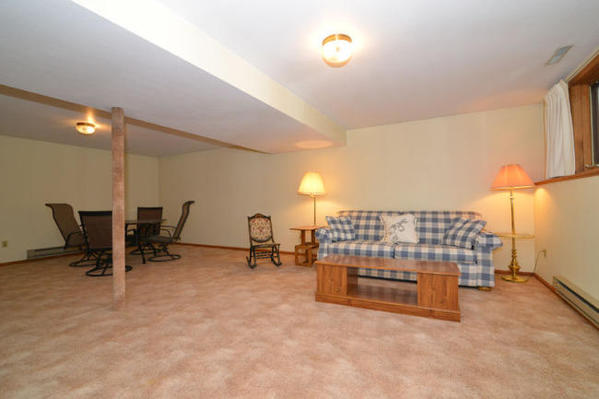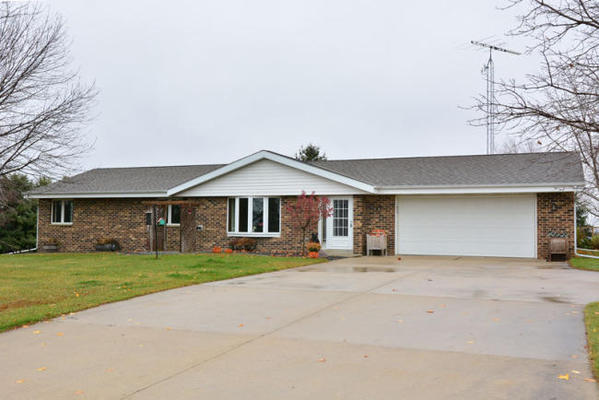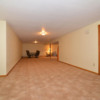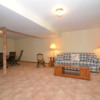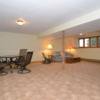Replies sorted oldest to newest
Charlie:
It would be a ranch with a huge basement. Then I wouldn't have to build an additional structure for my train room and workshop.
Tom
Assuming that you're looking for a basement, consider where the layout will go relative to allowing access for repairing/replacing the mechanicals. Depending on where the stairs, furnace, breaker panel, water heater, washer, and dryer are located, allowing for access and the ability to maneuver new ones into place can eat into the layout space very quickly.
Ideally, a house with a dedicated room sized accordingly, with few or no utilities in the ceiling, (plumbing, heating and sewer), and minimal wiring that would have to be accessed above or around the perimeter of the layout. These factors are very important when considering a layout.
Don
Very Big Basement... Ranch is your best bet. And what really helped me out is the walk out basement. short trips to cut wood on the saw, bringing in longer boards, and extra sunlight is a plus... then there is the sneaking in of trains.... added bonus... this is a whole different art.
Consider where the stairs enter the basement as well. IMO, stairs that end up in the middle of the basement are more helpful if you want an around the room layout, so you can just walk into the layout. If you want to do more of an island layout, stairs on the wall may suit you better. A utility area with access that you wont block with trains is also high on the list.
So, you're buying a basement with a house on top? very cool....![]()
Long dry basement, stairs coming down in the middle but close to garage,electrical breaker box in attached garage, furnace and hot water tank next to stairs, water supply comes in closer to floor than ceiling, main floor sewer exits thru wall in corner. did I mention long and dry basement. I don't know to much about the living level.
If you can't find a house with a large enough basement, look for one that has an oversized garage or some sort of large finished bonus space in the house.
From my experience owning a California Ranch Style. In California there are very few basements. This is fine in most cases due to lot size. I built on a 20' X 30' trainroom years ago. Over the years it had been filled with trains. Now that my layouts are gone it's one big empty space with my workbench, television and recliner. Since I'm too old for a "Man-Cave". What to do next? Plan for your senior years, a Card Room maybe? Nay, the neighbors would complain. You know how rowdy old men can get! ![]()
Assuming that you're looking for a basement, consider where the layout will go relative to allowing access for repairing/replacing the mechanicals. Depending on where the stairs, furnace, breaker panel, water heater, washer, and dryer are located, allowing for access and the ability to maneuver new ones into place can eat into the layout space very quickly.
This.
While I was originally (7 years ago) searching for a ranch with huge basement like many others have mentioned, I didn't find any that didn't have other oddities (like really old construction, poor floor in the basement, odd garage situation, etc).
I ultimately ended up with a new construction 2 story home with a basement that is pretty close to a rectangle. I forget the exact dimensions, but I think wall to wall it's around 36 feet on the long side and 26 feet on the short side. (minor smaller rectangle in one corner missing due to that being where the slab for the front porch is, if that makes sense visually)
Stairs and utilities are arranged pretty well. Stairs are along one longer wall, along that same wall (behind/under stairs) goes the water heater, HVAC, and sump pump in the corner. Room is not finished, but if I did, a relatively narrow hallway would allow for removal of all items listed if need be.
I mentioned sump pump, but I do not even know what mine sounds like, I am elevated enough in my neighborhood I guess that I do not have a high local water table. I do use a dehumidifier just due to moisture from the air in the summer.
The electric breaker panel is the only thing not in this row. It is diagonally across from the sump pump in a corner.
Note I did not list Washer and Dryer. Those are in a "closet" off the main hallway on the 1st floor. Admittedly would not want to think about a serious leak happening from there, but it's a compromise. I do have a nice shutoff valve that I can easily turn off the input to the washer when not in use so I don't have to worry about a hose bursting (I forget the name, but it is a modern "flip" style valve that does hot and cold together by moving the lever about 90 degrees. It is not an older multi-turn valve like for an external garden hose - I am of the impression it is not a good idea to continually turn those on and off on a regular basis.)
Ceiling height is also a factor. My joists are probably 7 1/2 feet or so from the floor, but some duct work for HVAC protrudes lower to maybe 7 foot mark. If I finished it, I would have a "step" in the ceiling most likely so it didn't need to be that low for the whole room.
The walkout is personal preference IMO. While it's got it's advantages such as mentioned above, I was less interested in a walkout from both a security and weather standpoint.
One of the worst layouts I saw when looking at houses (was a smaller house anyway - might have been a small Cape) had the major items one on each wall(right near the middle of the wall)! So the washer/dryer was one wall, the water heater was a second, the sump pump was the third, the HVAC was the 4th. Even without finishing the room, you would have been pressed to build more than a simple rectangular layout of pretty small size in that house.
Hopefully this is enough to get you thinking.
Depending on your geography and financials, perfection may be available, but probably for a hefty price! ![]()
-Dave
1. A walk-out basement is a big plus.
2. Ceiling height is a big plus.
3. Unfinished is a big plus--finished or semi-finished will tempt your wife with decorating potential; space for your kids; and, etc. Better if it's a nasty, drab, looking space.
4. Roughed in or functioning toilet facilities are always welcome.
5. A good lock on the entries is a must.
This is my story. We have purchased to homes, the first one was build in 1932 and the second house in 1936. The 1932 home was hooked up to city sewers and that was always an issue. City sewers will back up into your basement, even with a one way sewer valve.
The 1936 home home we purchased in 1996 and about a year later we added an addition, which added 550 square feet to the basement. No city sewer, sub pump. Never get water in the basement, it is all sand, and no clay.
We like the charm of an old house, but they have small basements, My layout is in a 550 square foot new basement. It works out just find and the laundry is not in the basement.
A large ranch home will give you the largest basement, but you have to like that type of design.
Good Luck & Cheers from Michigan
Dry basement is a must .. And you can tell ... Next no furnace in the center of the basement makes it a pain the but . Not a day goes by I want to move it and I will .. If your not running 0-72 or better 108! you will regret it .
We just moved into a new house in 2013. This is it for us, no more moving. Mid sized ranch with full basement, poured concrete. Nothing in the basement but HVAC, water heater, electrical panel and sump pump. Washer & dryer is upstairs on main level.
Only thing I really don't like is the sump pump, but I guess they don't build houses around here anymore without them. We had a battery back up pump installed right after moving in. That would be a minimum must have if you have a sump pump. That and a generator powered by natural gas would be even better (if you have natural gas). Something to think about.
Which valve are you referring to Dave?
The garden style metal are actually heavy duty, and waiting too long between uses is when they wont move, or break.
Over tightening is the #1 leak cause at the faucet.
No lube/+minerals is the number one cause at the stem. The minerals in the water form a crust stopping it from opening/closing. Newer designs are less effected by it, but it still happens.
All of your shutoff valves should be turned, once or twice a year, at least. You have to do it more often some places, but to keep them clean, clear, and in good working order use them on occasion.(don't forget at the meter, under sinks, icemaker, hot water tank drain(let it cool) filters etc.
On my valves, I wipe a tiny bit of food grade plumbers grease on the stems, at the base, where the stem enters the cap. Do it first, then after tightening them closed once or twice, reapply, wipe excess, but lave a tiny ring at the stem/cap. If you forget to turn it for a while, but need to suddenly, it has a little lube ready.
I do my gas valves too, always checking for leaks after.(never grease!).
If there is a T-drop trap, the cap should be removed, and checked every few(5max) years too IMHO.
Open of a floor as possible, and at least one bare wall length wise, would be on my list.
A long, straight, strait, between destinations located on opposite sides of the room.
Every area has cold/hot spots, and airflow(train smoke?). Knowing where/how this happens, may help your eventual comfort when operating.
Don't forget your building orientation to the sun. I prefer south or south east facing, kitchen on west side.
Happy hunting!





